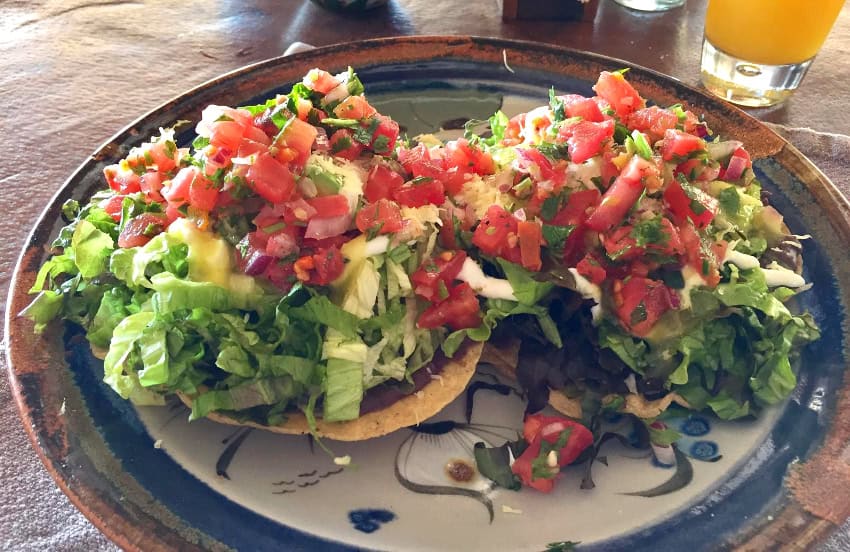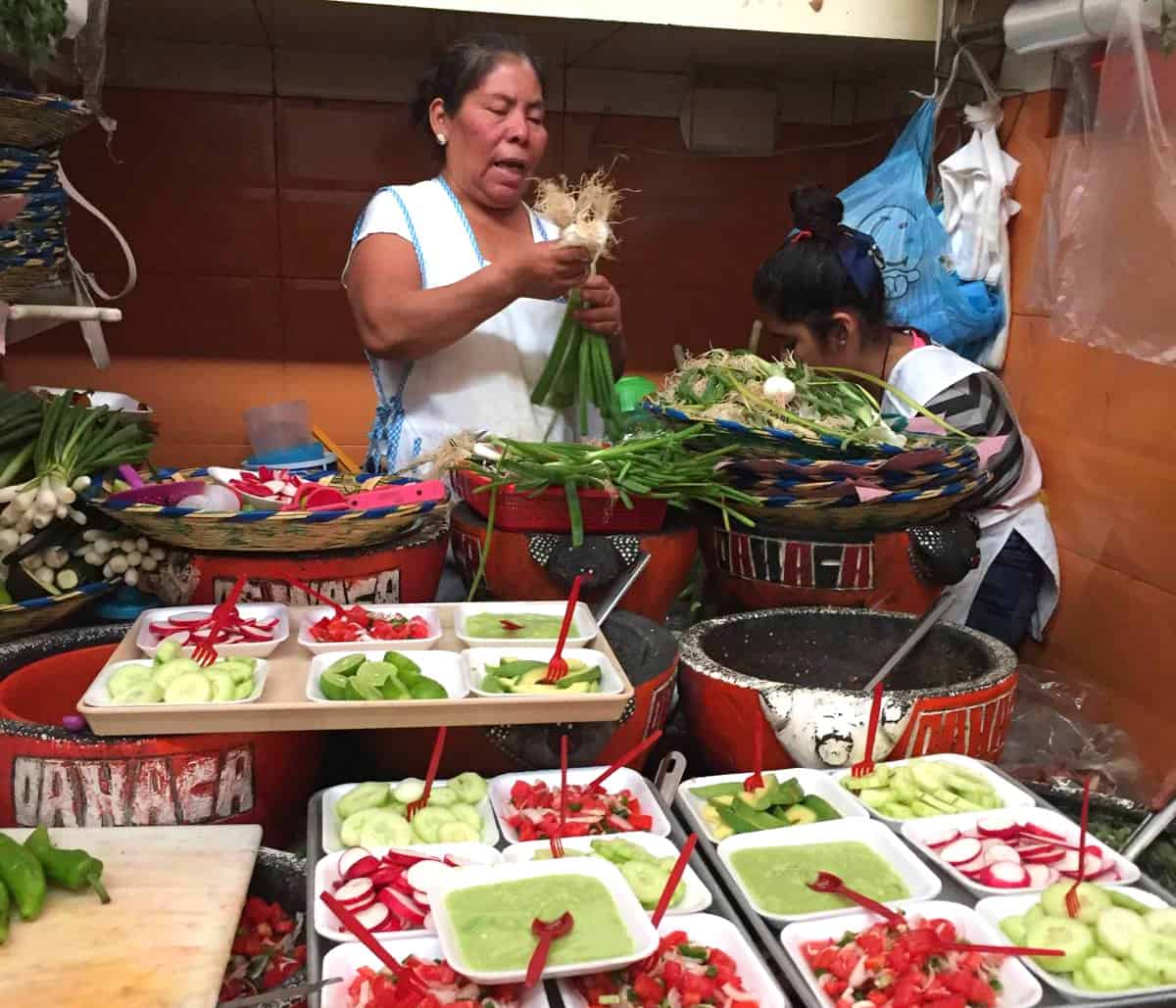Tamanna Bembenek on what inspires her about food in Mexico

Unlike Travis, my husband and co-owner of Mexico News Daily, I have a deep passion for food.
As a little girl growing up in India, I loved cooking in my toy kitchen. It was my first real experience with experimentation and exploration. I was fascinated with the colors, textures and fragrances of all the spices — especially, I loved the messiness of it all.
Similar to Mexico, food is an integral part of the social fabric in India. Everything revolves around meals. You cannot enter someone’s home, even for a moment, without being offered — or rather, forced — to eat something.
Fruits and vegetables are only grown in certain seasons, following the yearly monsoon season, which guarantees the freshness of ingredients. I didn’t see anything frozen or canned growing up. There are “cooking rules” based on Ayurvedic principles that provide guidance on mixing ingredients for better health and digestion. Such “cooking rules” are commonplace in traditional cooking, and increasingly, science is showing that our gut microbiome is heavily linked to our mental and physical well-being.
However, you’d also find Indians flocking to street vendors who make the greasiest, most delicious street foods every night, because food is also about family and fun.
Most Indian kitchens are simple and utilitarian. You would rarely, if ever, see a fancy marble countertop in an Indian household or a “chef’s kitchen” type arrangement. Generally, you’d find a set of three or four not particularly fancy, sharp knives, used for almost everything.
The entire cooking process in India is extremely laborious. Preparation work — including washing, chopping, peeling, grating, grinding, boiling, and roasting — takes hours for each and every meal. The preparation of each dish follows a strict time sequence from start to finish. An interesting observation when watching Indians cook is that they don’t use measurement tools. Instead, they rely on generational knowledge passed down through the women in the household. This intuitive and experimental approach has helped them become expert chefs.
It wasn’t until my twenties that I really started cooking Indian food, following actual cookbook recipes. That is when I also realized how food in that culture has always been a metaphor for coming together, sharing, connecting and making new memories. They say that in India, one never eats alone. You always have company: family, friends, work colleagues, random guests, or anyone you can think of. If eating is a social activity in India, then snacking is an all-day sport.
Living in Mexico brings back many of these memories, both in the kitchen and on the streets with food stands on every corner. Good food is not merely a necessity (and hence, an inconvenience) or a luxury (and hence, a status symbol); rather, it is a critical part of the culture, a daily social and communal activity.
I am certain that there is so much to share, so much to learn from the culture of food in Mexico and from Mexican flavors.

Here are some of my observations on Mexico and its cuisine, and part of the inspiration behind our expanded Food and Drink section on MND:
Life is never too busy to enjoy good food
Whether it’s the street vendors making tacos or tamales, small-town markets with baskets full of fresh, beautifully colored veggies and fruits, farmers selling fresh produce on the weekends, or Mexican women going door-to-door selling freshly made blue corn tortillas or ready-made fruit medley, food is at the center of all activities.
A double-oven kitchen is not very useful in Mexico
A lot of the food in Mexico seems to be cooked on the stovetop or on a grill. Personally, this is something very easy for me to relate to, given my own upbringing. Whether you have hired help or not, you don’t need to load up your fridge with pre-packaged foods because it is fairly easy to find neighborhood markets and bakeries for fresh veggies, meats or bread.
The look of your kitchen is less important than its function
HGTV’s kitchen remodeling hosts would be horrified by the lack of a one-piece sealed marble island in a typical Mexican kitchen. Fancy appliances and gadgets seem to matter a lot less than traditional manual tools like a stone mortar and pestle. One sharp knife, maybe two, is all you need in your daily life if you like to cook. Because indoor-outdoor living is so common in most parts of Mexico, kitchens are also not used for dining except for high-rise living.
Simple ingredients but complex flavors, rooted in tradition and history
There are more than 60 types of chilies and 59 types of native corn in Mexico, showing how simple things can produce complex dishes.
Corn in Mexico is as common as wheat in Europe or rice in Asia. The Mexica (or Aztecs) used corn with other basics such as beans, squash and grains to make simple, yet well-rounded dishes, full of vitamins and minerals.
In fact, to prove my point here, check out María’s article today in our Taste of Mexico series about corn!
Mexican markets are a must-visit
There’s nothing quite like it — an explosion of smell, color, noise, smoke, and local delicacies, not to mention the commotion and activity you will witness during your visit.
With MND’s expanded Food and Drinks category, we hope to introduce you to Mexican markets and flavors, with fruits and veggies that you may not have tried yet, along with a bit of history and traditions.


Pride in regional flavors
While tortillas are universal, Mexican dishes vary sharply by region. There are notable Middle Eastern, Caribbean and Mediterranean influences in some dishes.
Mexico City is an international foodie paradise
The food scene in Mexico City is unparalleled in terms of ethnic diversity, fusion, variety, quality, density of restaurants, price elasticity, friendliness, and character. MND is looking forward to introducing you to this culturally diverse food scene by visiting a few of our favorites that we believe may beat NYC or Hong Kong in world-class quality.
Desserts have more flavor, but less butter and sugar
Even a strawberry shortcake tastes fresher here than back home, with a focus on the actual strawberries rather than the sugar, cream and butter.
For all these reasons and more, the team at Mexico News Daily is excited to double down on our food and drink content.
There’s no shortage of recipes and cooking shows on TV or social media platforms. But sometimes, you just want to learn how to make a world-class tamarind margarita with your basic, yet delicious blue corn tacos, maybe with a little entertainment about the history of ancient pre-Columbian peoples of Mexico.
Our hope is to bring you all of this in a non-intimidating and entertaining way — as Anthony Bourdain once said, “your body is not a temple, it’s an amusement park. Enjoy the ride.”
More from Tamanna on MND:
Becoming a kid again: How Mexico has unleashed my inner childhood superhero
Mexico and mental health: Exploring the power of traditions and faith
Behind the scenes at Mexico News Daily: Our interview on ‘Mexico Matters’ podcast
3 things I learned from moving to Mexico and buying a business
Tamanna Bembenek was born in India, studied and worked in the U.S. and lives in Mexico with her husband, Travis. They are the co-owners of Mexico News Daily.
Source: Mexico News Daily

